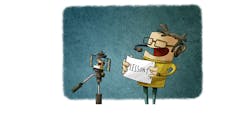When used intelligently, questions can help a distributor salesperson succeed in any selling situation.
Your actions in the selling situation (what you say and do) are driven by your attitudes (how you think about your work). For this reason, I dislike the term "sales presentation." A presentation is a one-way process, a monologue during which you "present" your products and services to the customer. If you consider your primary task to be that of making presentations, you become predisposed to monopolizing the situation by doing more telling than selling.
Customers rarely discuss their problems, needs and concerns without some urging on your part, and they certainly won''t buy unless they believe the benefits you offer will fully satisfy these needs. To help customers achieve this understanding, you must involve them in the selling process and engage them in productive dialogue. Simply talking to your customers does nothing but keep the focus on you, effectively removing them from the selling equation. Any sales approach that ignores the customer is doomed to failure from the start.
Rather than defining your time with the customer as a sales presentation, think of it as a sales dialogue, a process of give and take during which you learn about each other. The key to creating and maintaining this dialogue is the proper use of questions. When attempting to persuade, motivate, learn from or simply exchange ideas with other people, questions are among your most powerful tools. For the salesperson, the ability to use questions effectively is absolutely indispensable.
A successful sales professional once told me that prior to every call he develops at least three questions for which he wants answers. Depending on the customer and the situation, these questions might refer to product applications, current problems, future needs or past experiences. They might address service, inventory or delivery requirements. Sometimes they even concern the customer himself - for example, the pressures of his job, his worries and concerns, or, if he is an entrepreneur, his hopes for his business.
This salesperson explained that he considers a call particularly successful when all of his prepared questions were answered and yet he had asked only one. In other words, his first question was so well crafted, so "fine tuned" to the unique customer''s problems, needs and interests, that it caused the customer to address the other critical areas without further encouragement from the salesperson.
This task is not simple; and to accomplish it consistently requires a real skill - the ability to ask the correct questions. Equally important, however, it demands the ability to ask these questions correctly. This is an art. Both skill and art, however, can be learned, practiced and perfected.
The purpose of this series of articles is to provide you with the first of these. That is, to help you develop a basic understanding of the different kinds of questions and their effective use in the selling situation. The series will conclude with some time-proven tips regarding technique and application. Simply learning about questions is relatively easy. The hard work - practicing and perfecting their use - must come later. For that, you''re on your own.
Make your question work for you. Because few salespeople have given much thought to questions and their uses, most fail to appreciate their power. Lacking this appreciation, they enter the selling situation knowing what they hope to accomplish but with only a general idea of how they plan to get there. By not planning their questions, they give insufficient consideration to both their wording and their timing. They end up using them rather arbitrarily. It''s the same old story, another example of the failing that plagues much of present-day business activity. We spend plenty of time and effort developing sound and realistic objectives and goals, but then we fail to give equal attention to how we intend to achieve them.
You and I cannot do objectives and goals; we can achieve them only by doing work. For the sales professional, this work involves preparing thoroughly for each call. Because questions are such an integral part of any effective sales call, they should be a regular element of your presale planning. Otherwise, you won''t reap their full benefit.
How powerful are questions? Consider just a few of the things you can accomplish through their effective application. Questions can:
- Change the subject - and focus attention on the topic you want to discuss.
- Command attention.
- Put the other person to work.
- Obtain information in the form of facts and opinions.
- Force the reluctant customer to talk.
- Stop, or at least slow down, the over-talkative customer
- Provide you with an opportunity to collect your thoughts.
- Demand proof when you are presented with unsubstantial charges.
- Flatter the customer by requesting his views or opinions.
- Identify the key influence, the spokesperson or the decision maker in a group.
- Serve as a subtle probe for customers'' reactions.
- Cut through smoke-screen objections and flush out the customer''s real objection.
- Force the customer to answer his own question or objections.
- Cause customers to feel they''re controlling the situation.
- Encourage the customer to substitute logic for emotion.
- Help customers reconsider their positions.
- Prevent you from talking too much.
The above represent only some of the many uses of questions; but it matters little whether the advantages number 10 or 100. The important thing is to realize that questions are powerful tools - if you know how to use them. To this end, let''s examine the different types of questions that are especially useful in the selling situation. Our discussion will address how to use each type and will also offer some guidelines on when not to use them.
The direct question. The most common type of question demands an answer; it usually begins with who, what, when, where, why or how. When asking the direct question, you want the customer to feel that you are simply requesting information, which, after all, is its primary purpose. How the customer receives your question will be determined as much by your tone and expression as by the actual words, so use it with care in a nonthreatening way. For example, the question, "What exactly do you want?" can elicit very different responses depending on how you ask it. If asked too sharply, it can make you sound frustrated, even exasperated, with the customer, and he may think you are questioning his knowledge or his ability to make a decision. On the other hand, if your tone is measured and sincere and your expression one of obvious concern, the customer may realize you are truly interested in helping him solve his problems. Your delivery makes all the difference.
In addition to normal requests for factual information and opinions, you can use the direct question to:
- Uncover the customer''s true feelings or objections when you suspect that he is resorting to smoke screens.
- Shock the customer into real ity, forcing her to think logically about the issue under discussion.
- Demand proof when unsubstantiated charges are made.
- Cause the customer to substitute logic for emotion.
- Force showdowns, when showdowns are necessary - for example, as a last resort when the customer has allowed personal animosity toward you, your opinions or your company to affect his judgment.
- Obtain accurate information when it has not been otherwise forthcoming from the customer.
Some examples:
"Okay, George, you think the forecast is unrealistic. What do you believe is attainable?"
"You feel this equipment will be hard to maintain? What kind of maintenance do you think it will need?"
"Why do you think I haven''t been honest with you, Joan?"
"I understand your concern, Sam, but we have the capability. Who told you we couldn''t handle an order of this size?"
"If you don''t feel this is the right time to make a change, when do you feel will be the right time to upgrade to a more efficient system?"
"Exactly why do you think this is a bad decision, Nancy?"
"If our service is so important to you, why are you considering switching to our competition?"
From these examples, it should be apparent that regardless of how you phrase them, direct questions have some real risks associated with them. In certain instances, the customer might become embarrassed if he cannot, or does not want to, provide a reasonable or accurate answer. If you suspect this is the case, have an answer or a leading question ready for him. Your intention is not to highlight the customer''s ignorance or to force him to admit openly an uncomfortable truth; rather, you want him to rethink the basis of his decision or point of view.
As stated above, the direct question demands an answer. It is by nature intrusive. Accordingly, depending on the subject of the question (for example, personal or proprietary matters), the customer might strongly resent your intrusion into areas that she believes to be none of your business. The direct question can also cause the customer to feel trapped or fenced in, forced to commit to something she has not fully considered. Both of these situations can lead to frustration, even anger, which a customer might just take out on you.
Finally, if you are young or (in the customer''s eyes) inexperienced, he might consider your pointed questions as evidence of pushiness or brashness. This attitude often creates a psychic need to "put you in your place." The satisfaction of this need can take many forms. He might launch into a highly technical monologue designed to display his depth of knowledge. Or he might begin making references to his past - and vast - experience, thereby letting you know he''s no neophyte. Or, if he is really upset, he might decide to turn the tables and launch some direct questions at you, with the aim of highlighting your ignorance. None of these tactics help further your cause because they have the effect of shifting control of the selling situation from you to the customer. They also create a potentially hostile environment in which the customer may view you more as an adversary than as someone who can help solve his problems.
When confronted with a customer who seems bent on impressing you with his knowledge and experience, you must keep your goal clearly in mind and avoid the perverse tendency to engage in a contest. You are not opponents on "Jeopardy," intent on proving your intellectual superiority. Instead, you should show appropriate interest in what the customer has to say and turn real or pretended knowledge and experience to your own benefit.
For example, if you suspect a customer''s resistance to a new product stems from a technological ignorance he is unwilling to admit, you might say something like, "Considering the high-tech products you use and how busy you are, I can imagine how difficult it is to stay abreast of all the developments in the industry. This product, for instance, makes use of some remarkable new technology that offers your customers a number of truly exceptional benefits. I''ve just learned about it my self. Why don''t we take a few minute to discuss some of the details?"
The first statement provides the customer with an escape hatch giving him a reasonable excuse for not knowing about every new high-tech product on the market. There are, after all, lots of new products. The second statement reinforces the "newness" of the product in question and tempts the customer with a reference of its benefits to his customers. The admission of your own new-found knowledge shows that you do not claim any kind of superiority over him. Finally, the question invites the customer to join with you in a discussion of the technology and the product. You are asking him to enter into a sales dialogue, a two-way conversation, not sit through a one-way presentation.
Don''t rule out the direct question simply because of its potential hazards. It need not be avoided, just used cautiously. You need to ask the direct question sincerely, paying attention to your tone of voice, facial expression and overall attitude. You are not a prosecuting attorney questioning a hostile witness; your aim is to come across as someone who is honestly perplexed and seeking information. The risks are further lessened if you know your customer well and apply this knowledge. After all, the more you know about your customer, the more likely you can anticipate and even predict his behavior in selling situations.
Before your next call, take a few moments to consider exactly what you hope to learn and accomplish. Then, based on the customer and situation, prepare a series of questions designed to elicit the responses you seek. Try them out in advance on colleagues and friends. You might be surprised at the reaction to what you thought was the "perfect" question.







